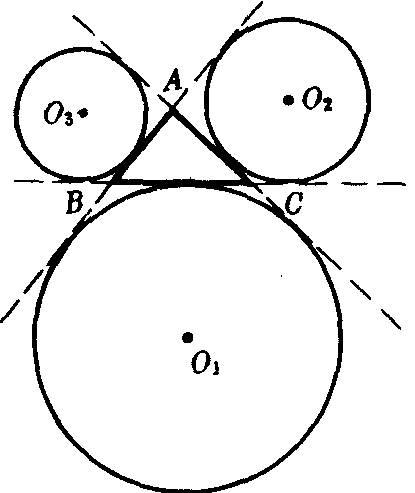三角形的旁切圆sanjiaoxing de pang qieyuan
和三角形一边及另外两边的延长线都相切的圆.旁切圆的圆心叫做三角形的旁心.一个三角形有三个旁切圆,如图.

三角形的旁心是三角形一个内角平分线及另外两个角的外角平分线的交点.
| 词条 | 三角形的旁切圆 |
| 类别 | 中文百科知识 |
| 释义 | 三角形的旁切圆sanjiaoxing de pang qieyuan和三角形一边及另外两边的延长线都相切的圆.旁切圆的圆心叫做三角形的旁心.一个三角形有三个旁切圆,如图.
三角形的旁心是三角形一个内角平分线及另外两个角的外角平分线的交点. |
| 随便看 |
开放百科全书收录579518条英语、德语、日语等多语种百科知识,基本涵盖了大多数领域的百科知识,是一部内容自由、开放的电子版国际百科全书。